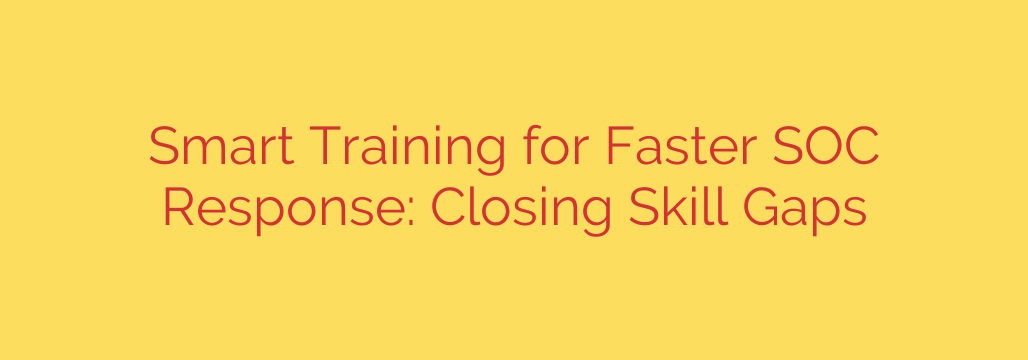
Faster Incident Response: Why Smarter Training is Critical for Your SOC
In the face of ever-evolving cyber threats and an overwhelming volume of alerts, Security Operations Centers (SOCs) are under immense pressure. A critical factor determining their success is the speed and effectiveness of their response. While technology is essential, the performance of your SOC ultimately hinges on the skills and readiness of your analysts.
Many organizations face significant skill gaps within their SOC teams. Traditional training methods, often theoretical and classroom-based, struggle to adequately prepare analysts for the high-pressure, dynamic environment of real-world incident response. The complexity of modern attacks requires more than just theoretical knowledge; it demands practical, hands-on expertise, critical thinking, and the ability to act decisively under duress.
Closing these skill gaps through strategic, hands-on training is paramount for improving SOC efficiency and reducing the critical time it takes to detect, analyze, and respond to threats. This isn’t just about learning tools; it’s about developing the muscle memory for effective investigation and containment.
What constitutes effective, “smart” training for a modern SOC?
- Focus on Practical Application: Instead of just lectures, training must involve realistic simulations and scenarios that mimic the types of attacks analysts will actually face.
- Utilize Cyber Ranges: Dedicated cyber range environments provide a safe, controlled space for analysts to practice identifying threats, using security tools, and executing response procedures without risking the production network.
- Develop Critical Thinking and Threat Hunting Skills: Training should go beyond simply reacting to alerts. It should cultivate proactive skills like threat hunting and the ability to piece together disparate pieces of evidence.
- Emphasize Teamwork and Communication: Effective incident response is a team sport. Training should include exercises that require collaboration, clear communication, and adherence to established playbooks.
- Be Continuous and Adaptive: The threat landscape changes constantly. Training programs must be ongoing, incorporating lessons learned from recent incidents and adapting to new attack techniques.
Investing in this kind of strategic training yields tangible benefits:
- Faster Detection and Response: Analysts who are well-trained and confident can identify and contain threats more quickly, significantly reducing dwell time and the potential impact of an incident.
- Improved Accuracy: Better-trained analysts are less likely to miss critical indicators or generate false positives, allowing the team to focus on genuine threats.
- Increased Analyst Proficiency and Confidence: Practical experience builds confidence, enabling analysts to perform better under pressure.
- Enhanced Team Cohesion: Training together strengthens team dynamics and improves coordination during actual incidents.
- Better Retention: Investing in analyst development shows commitment and can help retain valuable talent in a competitive market.
Ultimately, the speed and effectiveness of your SOC’s incident response are directly linked to the preparedness of your people. By prioritizing smart, hands-on, and continuous training that addresses practical skill gaps, organizations can significantly enhance their defensive capabilities and build a more resilient security posture. Equipping your analysts with the right skills through realistic practice is not just an investment in training; it’s an investment in your organization’s security future.
Source: https://www.helpnetsecurity.com/2025/07/09/tryhackme-advanced-endpoint-investigations/








